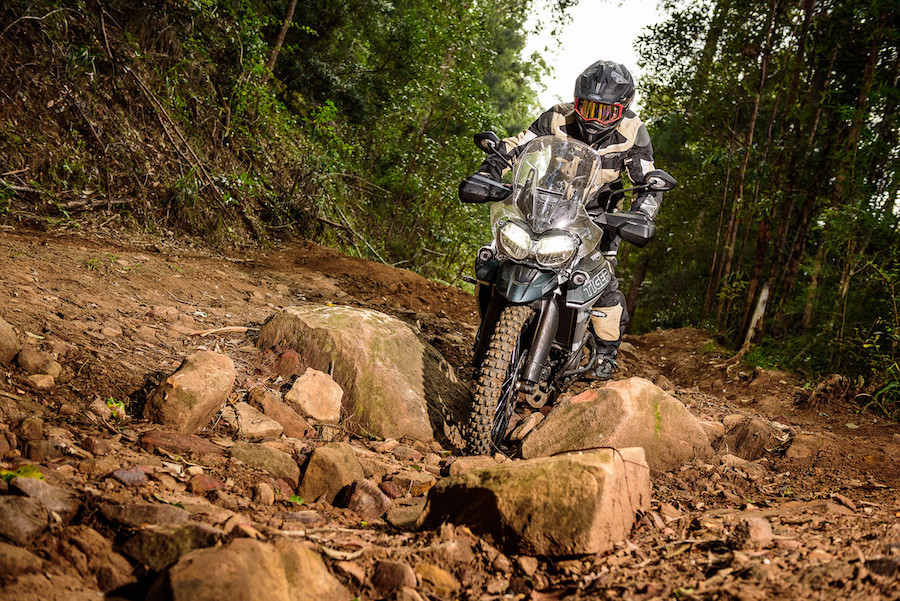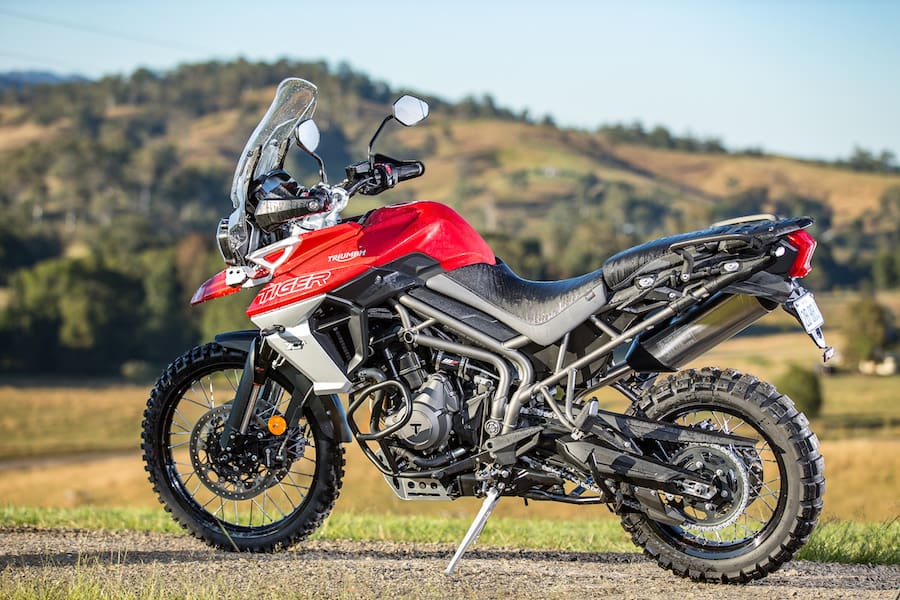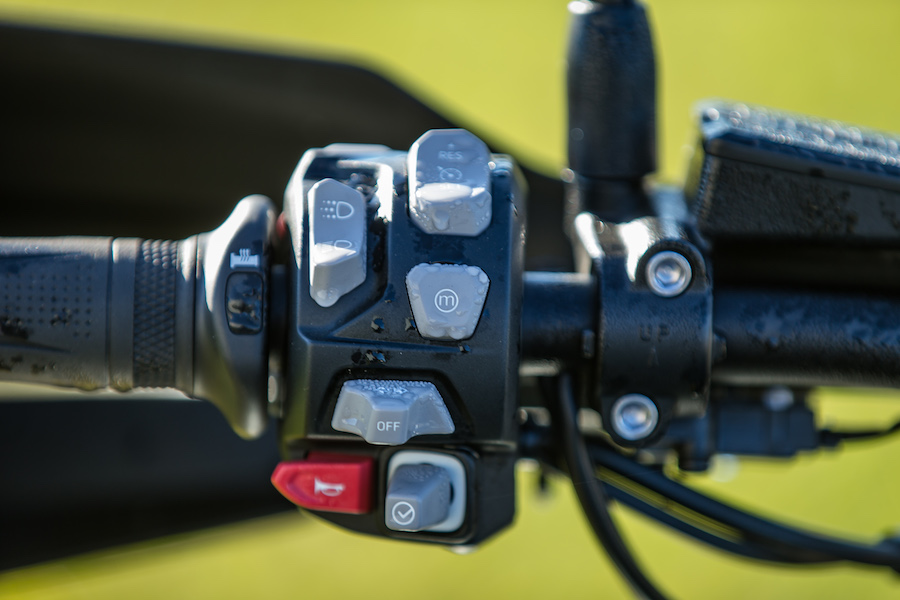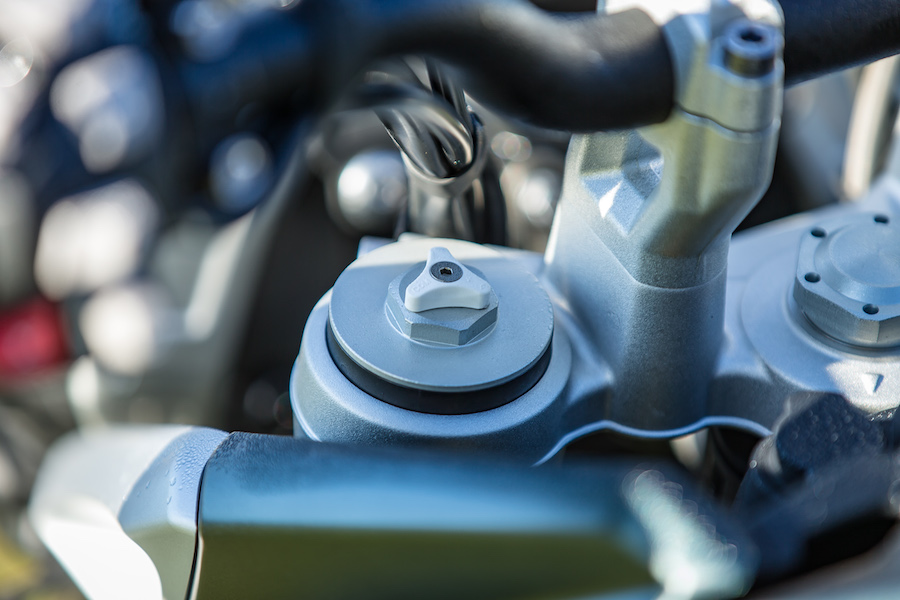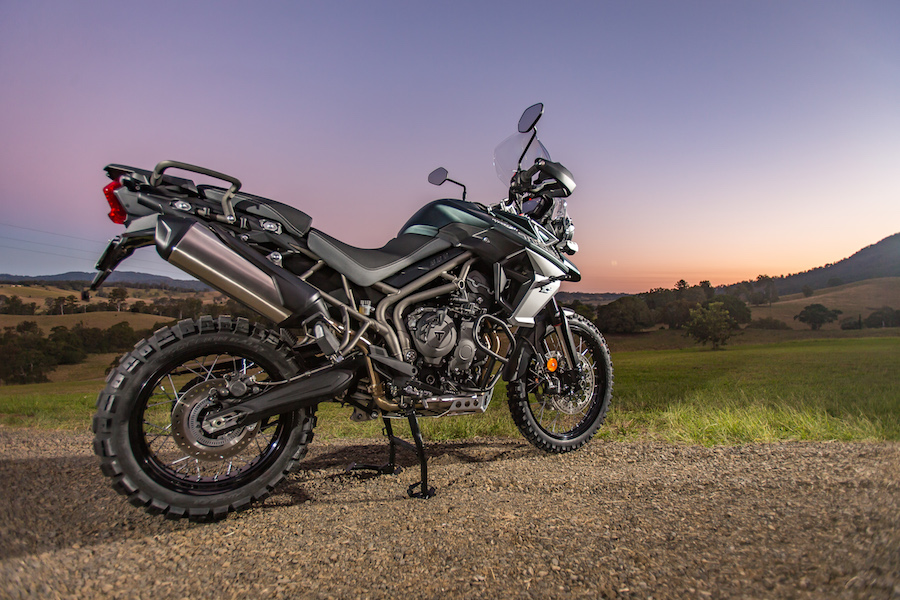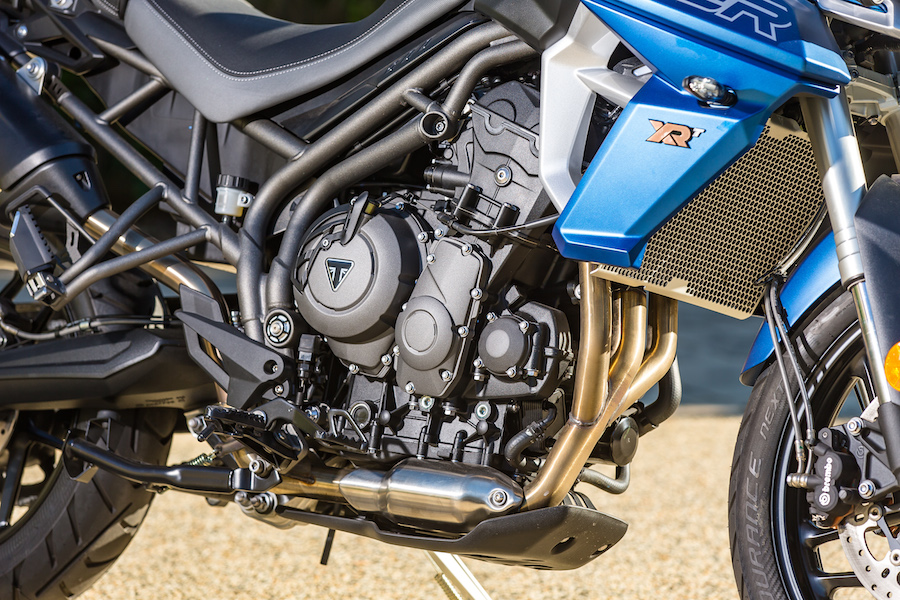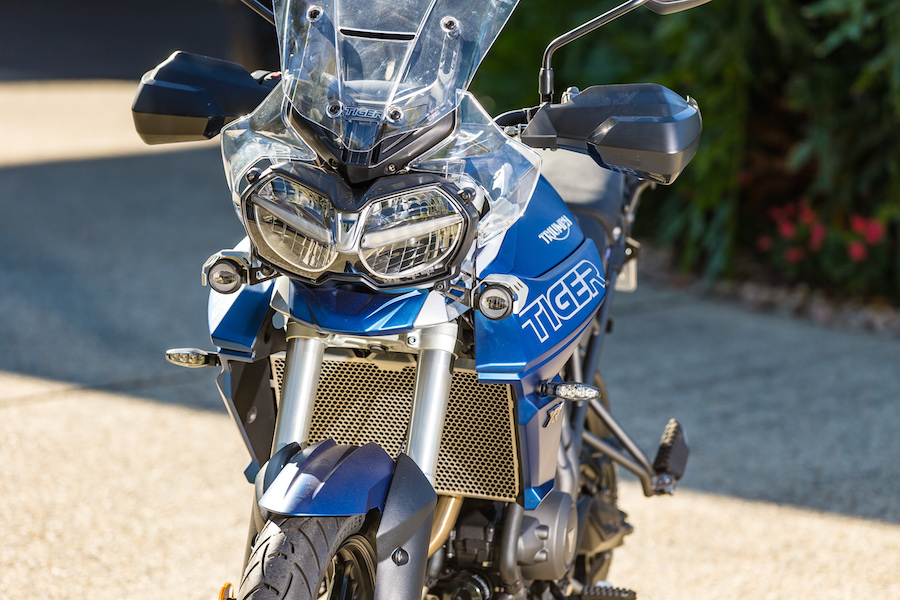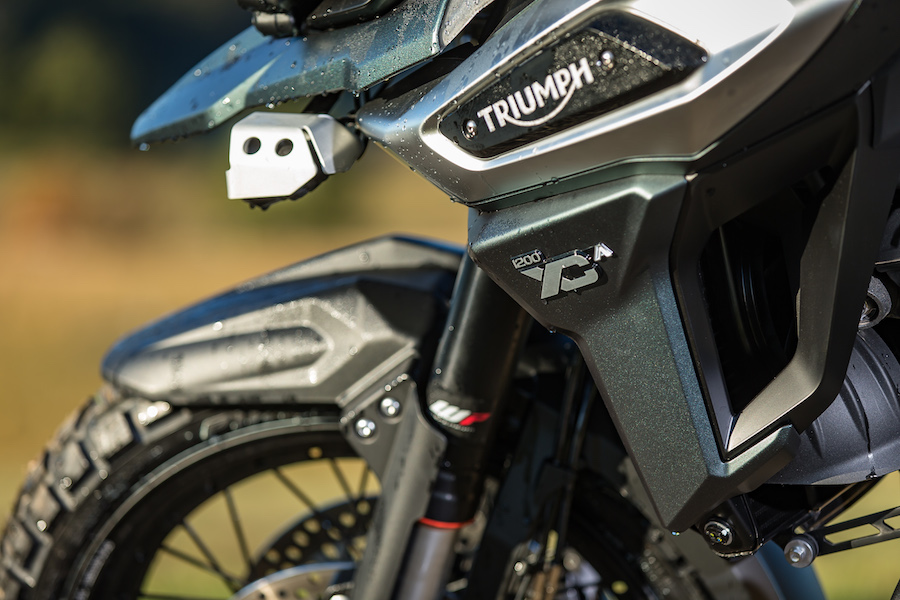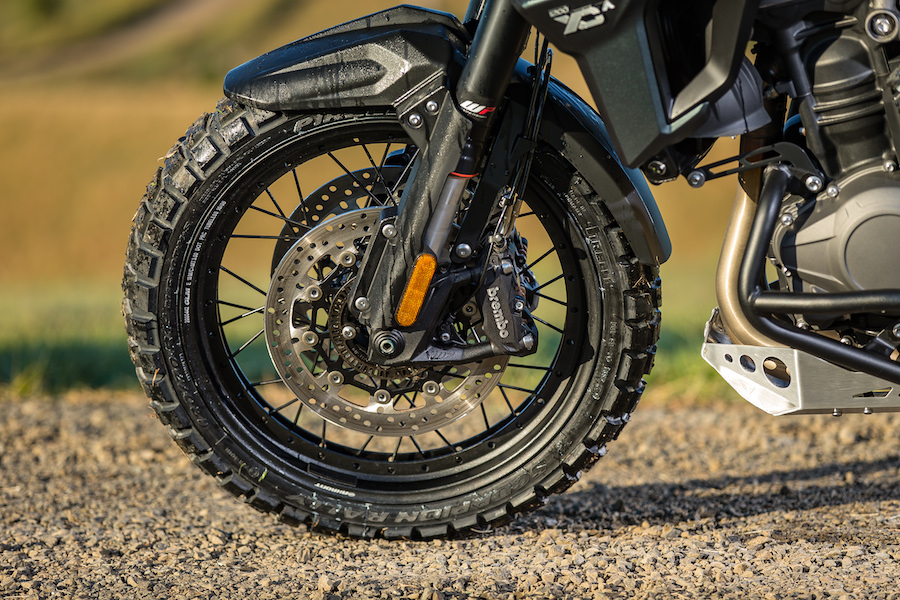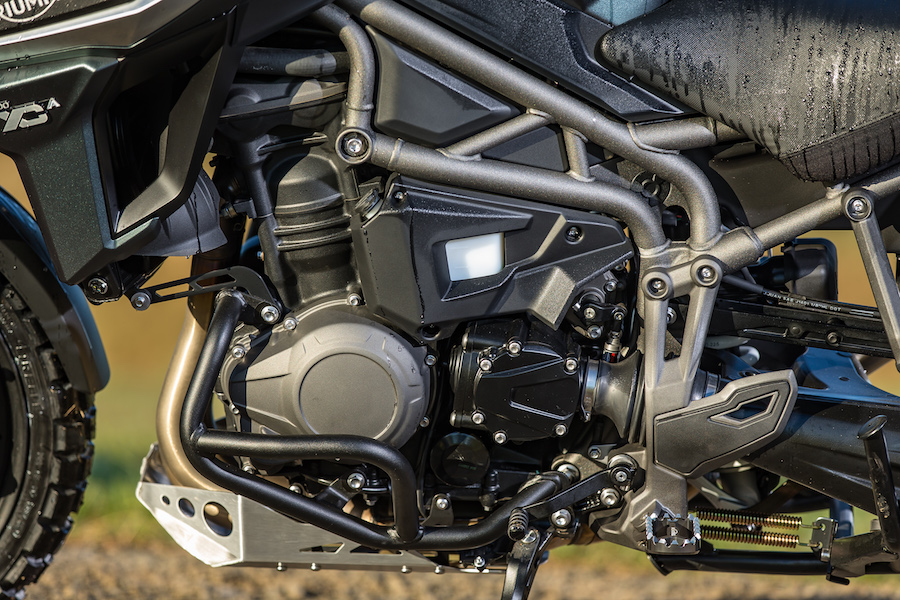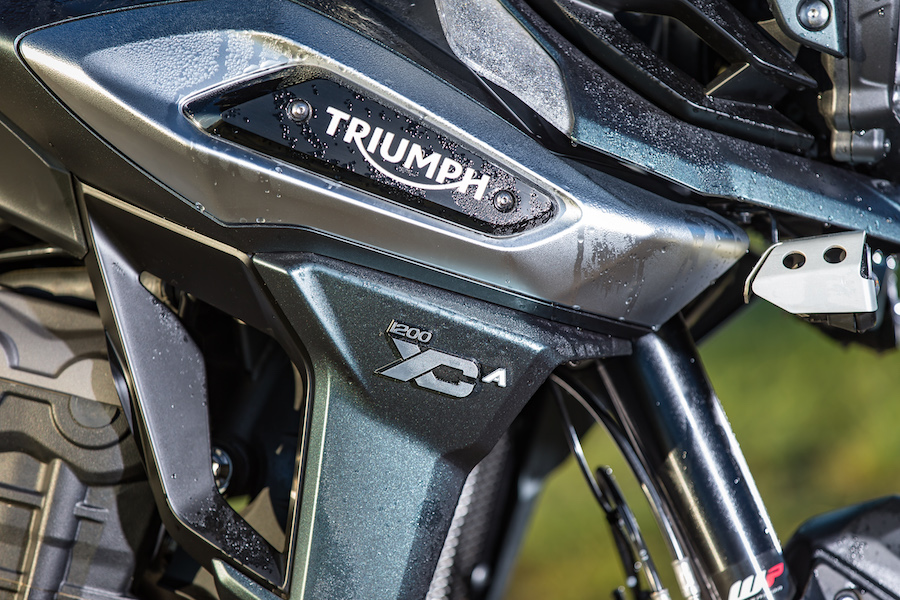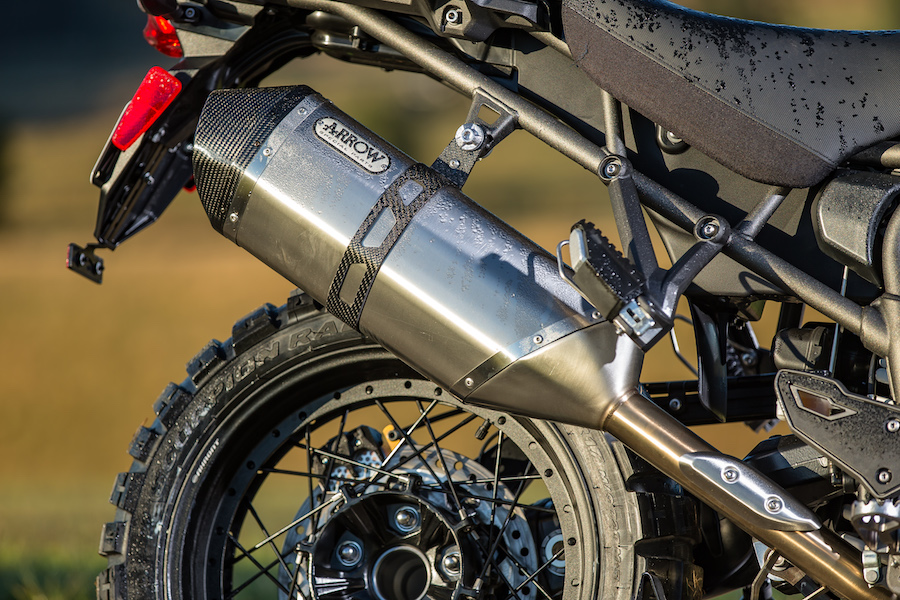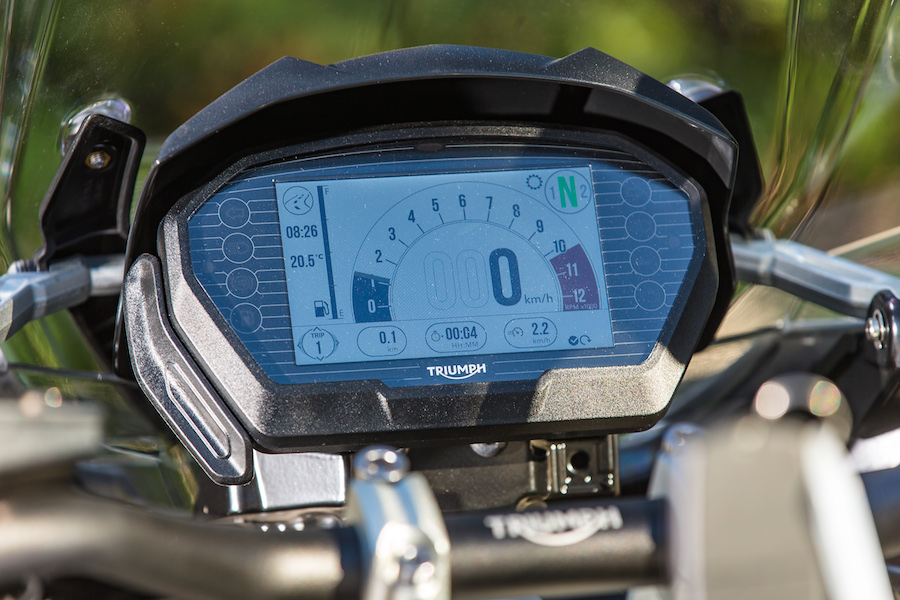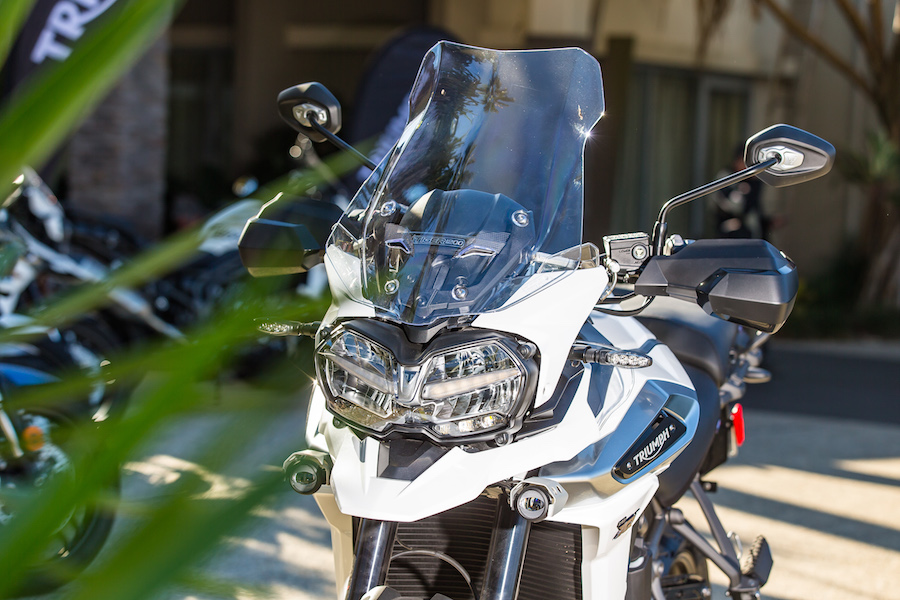When it comes to adventure bikes, Triumph has been left in its European rivals’ dust in recent years. But with the new 2018 range, that’s all about to change
The adventure bike market has evolved and grown exponentially during the last decade, so it’s serious business for the brands involved. They’re the dual-cab utes of the motorcycle world; one on every corner and nearly every manufacturer is trying to out-bling the competition to lure would-be owners into its dealerships. And the options are pretty much endless.
No longer a high-end product, a swathe of brands new to adventure circles have come to the market with basic offerings at competitive prices in recent years.
And while the range-topping BMWs and KTMs have ruled the roost over the last couple of years, Triumph is well and truly fighting back with its heavily updated triple-cylinder 800cc and 1200cc ranges.
Multiple variants across two platforms can get confusing, so before we get into it, let me explain what’s on offer.
Essentially the XR and XC families are very similar. The XR nomenclature points to a road-biased bike with mag wheels – the type of bike you could take off-road if you wanted to, but it’s extremely suited to a blast on the tarmac; a soft-roader, if you will.
Tiger 800
The XC variants are Triumph’s true off-road offerings, sporting wire-spoked wheels and more off-road-focused suspension. But these bikes are still more than capable of ripping up the kilometres on the road.
Each variant is available in either 800cc or 1200cc capacities and, depending on how much dough you want to spend, they go from well-equipped base models to burgers with the lot.
I’m going to cover the top-spec XRT and XCA variants for this test, as those are the bikes I spent my time on.
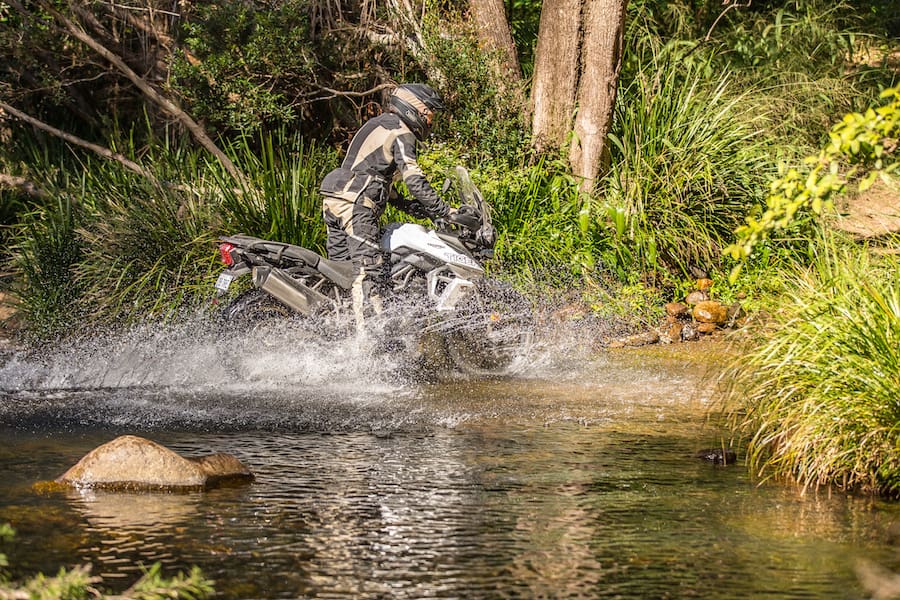
The new 1200 range sticks with the long-haul king theme. It has always been one of the best when it comes to long days in the saddle, and its shaft final drive reduces day-to-day maintenance.
The criticism of the last generation, dubbed the Explorer, was its considerable weight compared to its rivals, and Triumph has succeeded in streamlining the new range.
The 800s have a cult following and capture your heart with their feel and triple-cylinder grunt. Being lighter than the bigger-bore machines gives you confidence in tricky situations, especially off-road where the power is easier to manage and the lighter weight means you can delve deeper into the bush.
Tiger-800-XCA
I spent 12 months with Triumph’s now superseded 800 XCA and, while it had its quirks (like unintuitive switchgear), I loved every minute of it. But, having ridden almost every adventure bike on the planet, and with the market developing and advancing at such a rapid rate, it was clear the British offerings were getting a bit long in the tooth.
Now, from a brand that has released more all-new or updated motorcycles in the last few years than I care to recall, comes a new and improved range of adventure-ready machines. There’s actually nine in total and between them the range caters to a good percentage of the lucrative adventure bike segment.
Most of the updates on the 1200cc are common to all bikes in the range. A significant upgrade for 2016 caused a bit of a stir, but really the XCA off-roader was probably a little too road-focused for a big-bore adventure bike, while the road-focused XRT was too porky, though they won in the comfort stakes and offered the highest power output of its shaft-driven contemporaries.
What we get for 2018 is an XCA that has been considerably improved to make it not only more nimble on the black-top, but far more at home off it as well.
The new 1200s have at least 100 changes, all in what has been a process of continual development over the last couple of years. Triumph has identified the weak points and gone about making them right.
The most important job was to lose some of the heft, and the result is an 11kg saving on the XRT and 10kg on the XCA. It’s a significant difference, and mostly due to a lighter battery, muffler and flywheel. Importantly, it’s a noticeable improvement when you’re on board.
Tiger-800-XRT
A new full-colour TFT dash and integrating all of its upgraded electronic rider aids immediately makes for far more user-friendly machines. The Tiger has gone from one of the most difficult bikes to adjust settings to one of the easiest. A simple toggle switch on the left ’bar now operates all the systems through the dash, including the semi-active WP suspension.
On the comfort front, the big-bore offerings receive a new seat compound and revised handlebar positioning. As with the previous models, the seat is height-adjustable, which gives even more ergonomic adjustability at no extra cost. Heated seats are standard on both top-spec 1200 variants and are a brilliant asset if you spend time on the bike in winter. A warm butt needs to be matched by warm hands, and heated grips are a standard inclusion across all nine offerings.
The backlit switchblocks are a nifty advantage when trying to locate the controls at night and, speaking of lights, there are spotlights, daytime running lights, an all-LED headlight, and self-cancelling indicators.
Improved Brembo brakes are fitted and are applied via an adjustable-for-reach lever. Cornering ABS works through the on-board IMU (inertial measurement unit) and adjusts its level of intervention depending on your lean angle. There’s electronic cruise control, and the headlights are an adaptive cornering type, shining more light into the corner as you lean in.
Both the XCA and XRT benefit from revised bodywork designed to be sharper looking, and it is certainly that.
The previous XRT was such a comfortable roadbike it was hard to imagine how much it could be improved with those 100 changes, but there’s a lot. The first thing you notice is better balance at a standstill. It’s by no means light, but a definite improvement has been gained in confidence even just getting on and off the bike.
Tiger-1200-XCA
As soon as the wheels start to move, though, the weight disappears and it’s a well-balanced bike – one that has lost none of its comfort. Every time I sat in the seat it felt like I was sitting in a well-worn armchair, and that made riding fun and easy.
The XRT has always been one of the top choices for rough and long roads, but this year it gets a double thumbs up with its refinement in two specific areas – electronics and performance. The calibration of the electronic rider aids is far more refined and there’s a wider range of adjustment now, which reflects in its on-road performance. Finer increments allowed me to tailor the ride exactly to my preferences, rather than a bit to one side or the other as was the case with last year’s bike. And the electronic quickshifter is excellent.
The new engine pumps out power where you want it, at real road speeds, and with plenty of bottom-end torque, it’s really easy to use thanks to the latest array of six engine modes – Road, Rain, Sport, Off-road, Rider-defined, and a new one called Off-Road Pro.
The 1200 XCA has always faced fierce competition from the likes of BMW and KTM, but its cumbersome heft and the almost-there electronics package hampered its off-road credibility. It’s always been the best when it comes to all-day comfort, though, and after getting off the 800 XCA (which is very comfortable) and plonking myself in the saddle of the bigger machine, it still is. It’s a big bike and is made to cover big distances, so comfort levels like this are a huge advantage.
This XCA is now a far more convincing off-road choice than the outgoing machine. Sure, it’s not going to win a motocross anytime soon, but aim it at even the snottiest 4WD-only tracks and it will plod on through every time.
The electrically adjustable screen is so effective that you can hear the off-road tyres whirring on the road, which doesn’t really matter because the XCA is in its element on fire trails. It is such a joy to ride, carving its line well with plenty of power – and plenty of stopping power too. The off-road map works great at a normal pace, letting the rear spin up a little (but not too much) while the new Off-Road Pro mode is there if you want the freedom to let loose.

Like the 1200s, the 800s have received many upgraded features. The full-colour TFT dash is fitted with the same switch blocks (except they’re not backlit on all models, only the high-end XRT and XCA variants). Again, there are six engine modes available, including the rider mode that lets the user set his or her preferences; the old bike had this, but it’s just so much more user-friendly this time around.
The screen offers five steps of manual adjustment now and is super effective with the new air diffusers.
I found first gear too tall on the old bike, and Triumph obviously agreed because this has been rectified.
LED lighting is standard now and all bikes boast DRLs. The standard spotties are much brighter than before, giving this bike good night vision straight out of the box.
Tiger-1200-XRT
The standard pipe is freer flowing and lighter than its predecessor, and gives off a great note for a bog-stock pipe. The 800cc engine is virtually unchanged, the firm focusing on closing tolerances and reducing backlash in the primary gears.
After riding the 1200 XRT, I was starting to query the relevance of the 800 variant. Lighter and more nimble, the new 1200 now filled quite a few roles the outgoing 800 otherwise would have. But the 800 is such a great bike, and so different to the big girl when you get on board, that my questions were immediately answered. It’s lighter, smaller and so much easier to handle.
It can go anywhere the big bike can, and with the same comfort, but it lacks a bit of the bling of its bigger brother – no semi-active suspension or quickshifter – but the important bits are there and that’s what you feel when you’re underway.
Optimised fuelling, freer flowing pipe, new clutch and new primary gears make it feel more responsive, and it’s still happy to lope along in top gear on the open road. The seating position is comfortable and gave me a good sense of control over the bike, which allowed quick changes of direction without compromising stability in fast, long sweepers or over rough ground.
The Showa suspension did its bit in absorbing the rough backroads we tackled, and I even backed off the compression and rebound on the front fork to give an even smoother ride.
Like the road-focused 1200 XRT, the 800cc counterpart’s off-road capability is surprisingly high and will chew up as many gravel roads as you’re prepared to throw at it.
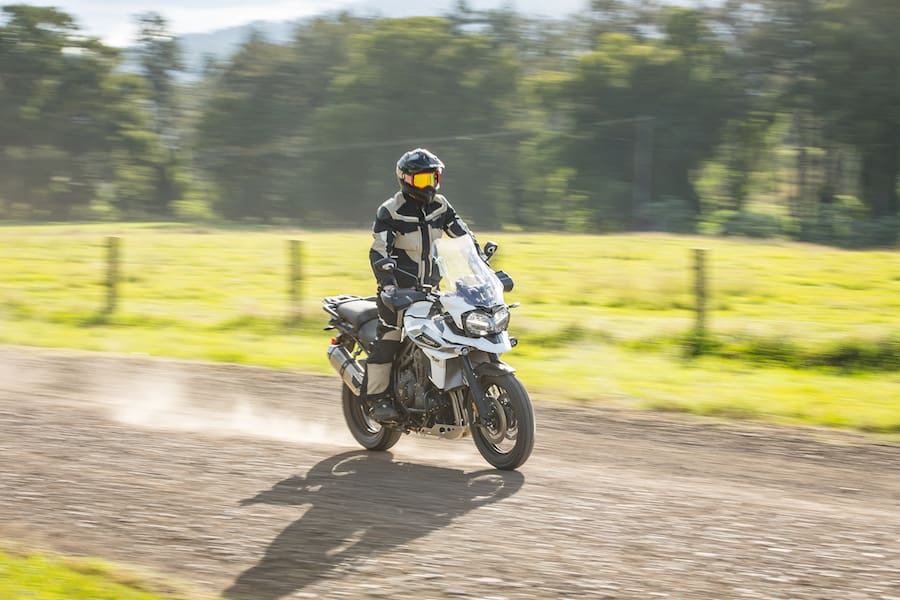
The only area I can fault – and it’s only because I’d just jumped off the better equipped 1200 – are the brakes. After the excellent bite and power of the four-piston Brembos, the two-potters on the lighter 800 required more pressure on the lever to get it to pull up, but they still did the job.
Triumph’s Tiger 800 XCA is one of my favourite bikes of all time, so I had been keen to try this heavily upgraded model. I only managed about 100km on the bike, but most of it was on some pretty serious 4WD tracks near Kyogle in New South Wales’ Northern Rivers region.
Just like the XRT, it benefits from the lower first-gear ratio, which meant it was a lot easier to dawdle and pick a line on a snotty track, but the main benefit was instant power. Despite the relatively unchanged engine, the 800 now has much more response down low. The gearbox overall is excellent, but I did wish it was endowed with the quickshifter fitted to the 1200s.
The suspension feels far more compliant off-road now and the XCA keeps its composure on hard-packed dirt and over rocky surfaces, but the biggest difference is in sand, where the front now feels solid and doesn’t want to tuck like the old bike tended to do.
Standing on the alloy pegs felt very natural, and I had good amounts of control over the bike. The 840mm seat height meant low-speed manoeuvring was as easy as it’s ever going to get with one of these larger adventure bikes.

I had the opportunity to try the Tiger two-up on a gravel road and it kept its line predictably; it still had plenty of go and the front stuck like glue.
Triumph has done such an excellent job with both platforms that it’s hard to find any real criticisms of the new range.
Unlike a track-focused superbike, where there’s one clear purpose for which that motorcycle is built, each and every adventure rider will ask very different questions of their so-called adventure bike. Some want a higher percentage of gnarly off-road performance while others simply ask for all-day soft-roader comfort.
Our broad-spectrum test in many and varied Australian conditions allowed each of these four bikes to shine. Put in its own environment, each bike is better in its own right. I love hardcore off-road adventure riding, so for me it’s the Tiger 800 XCA. But if I did an annual Nullarbor crossing, I’d take the 1200 XRT hands down.
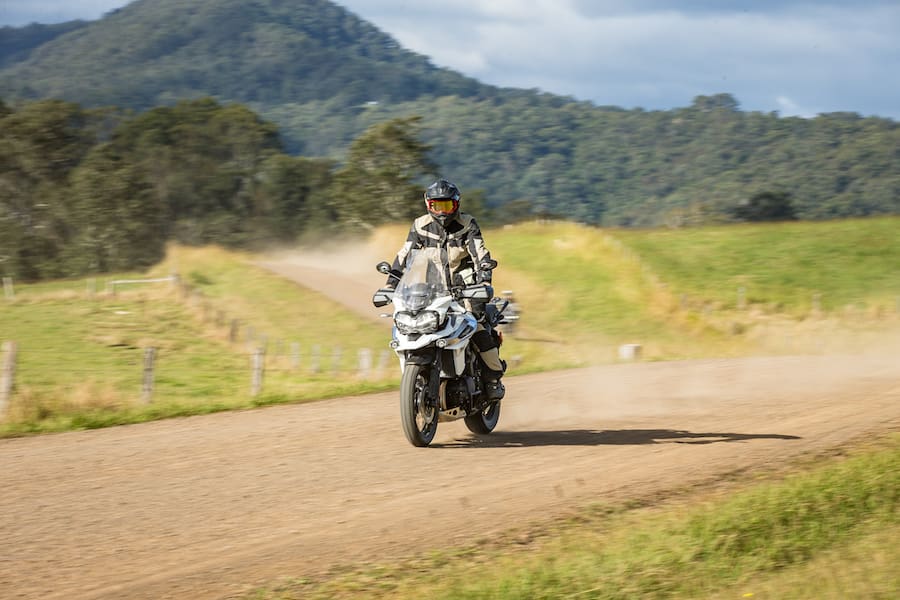
TEST Steve Martin
PHOTOGRAPHY IKapture & Danny Wilkinson
